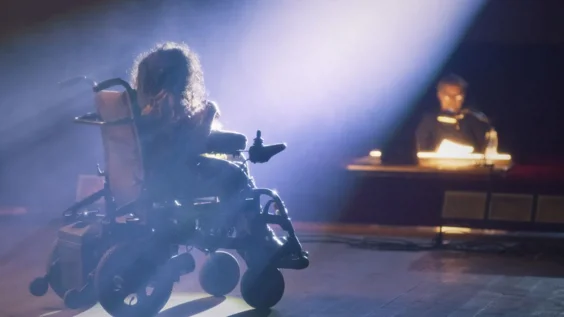For this guide, blind is defined as significant sight loss where the performer cannot read a script in large print (16 or 18 size) or giant print (sizes above 18). This can include people who are completely blind, that is, have no light perception, but is not limited to this.
Requesting reasonable adjustments
By law, clients you are working with should provide reasonable adjustments. For this guide, a Reasonable Adjustment is defined as an adjustment that makes it easier for you to perform tasks, and that does not cause significant, long term disruption for a client, thus allowing them to maintain an efficient service.
These adjustments could include, but are not limited to, scripts sent to you beforehand whenever possible, scripts provided in a format other than PDF, allowing you to use a prepper for long form audio, and if performing Animation or ADR, letting you record your lines along with a guide track where you hear the dialogue that was originally recorded, s you speak. Do not be afraid to ask for adjustments, as not only does it help you, it may make it easier for clients once they know what is required.
Barriers and potential solutions
It is widely assumed that blind people have support available for them whenever they need it. However, this is not a given, and there are some blind people who simply do not have support for aspects such as creating home recording booths and setting up digital audio workstations. Not only that, but it is an unavoidable fact that tasks will take longer for blind people to perform. However, there are workarounds that will at least mitigate the lack of support and speed up processes. Not only that, but you can ask other people to help you to prep a script as stated above.
Finally, it is best to be honest with clients about how long tasks will take. Doing this will mean you won’t be caught out if you have to ask later on for deadlines to be extended, and will reduce the potential for burnout from trying to meet deadlines that you may not have the capacity to meet. By being honest about your needs with clients and how they can meet them, clients will be able to be more inclusive to blind audio performers, who would be ideal for working in audio.

